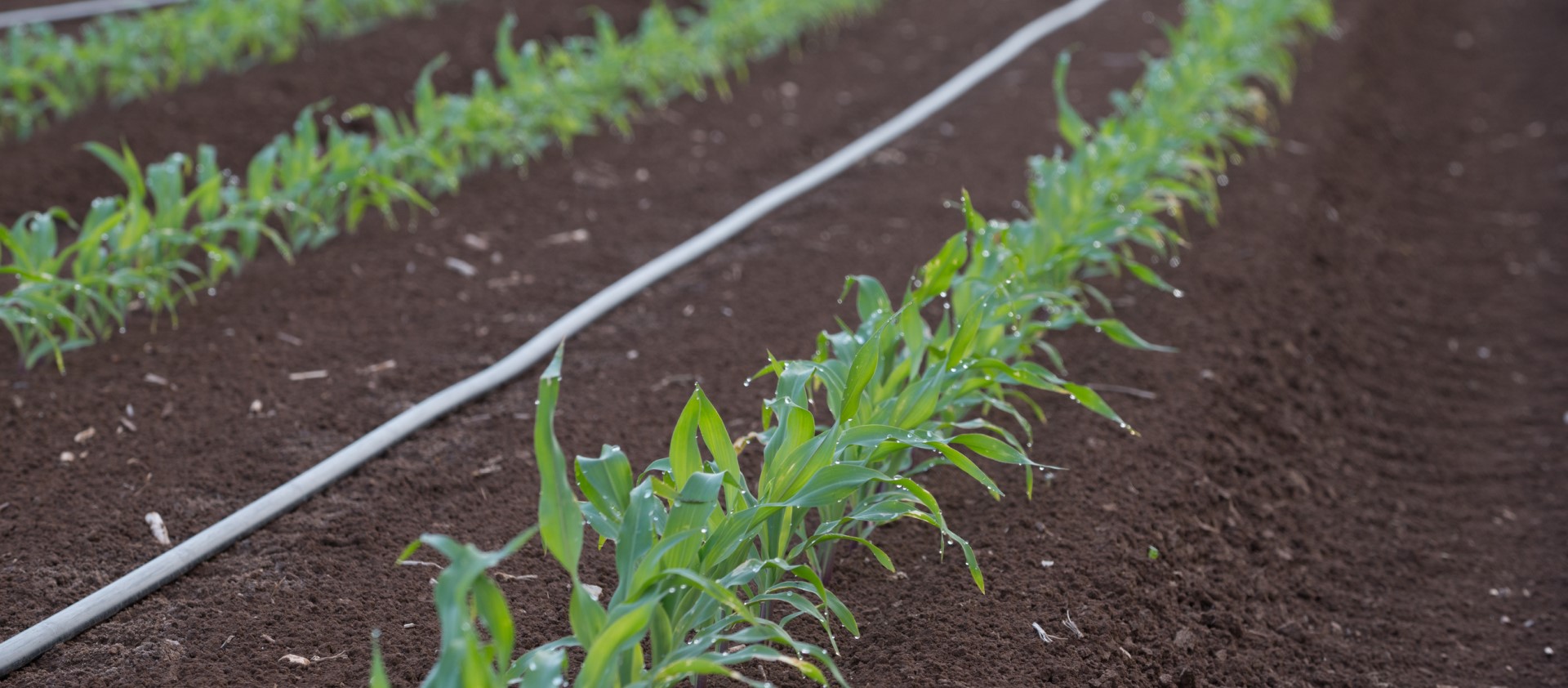Évora, São Máço District, Alentejo, Portugal, 2013
In this example comparing two test fields of corn in 2013 – one using a Center Pivot system and the other utilizing Drip Irrigation – it showed that drip irrigation delivered notable improvements in water use efficiency, cost savings, and enhanced yield and production sustainability.
In the example, results included:
- 30% Increase in Yield: Drip irrigation delivered a higher yield of 15.6 t/ha compared to the 12 t/ha produced by Center Pivot.
- Water Efficiency: Drip irrigation reduced water usage by 20%, offering significant savings in water costs.
- Cost Savings: Lower energy and maintenance costs contributed to overall cost reductions, making drip irrigation a more cost-effective long-term solution despite higher initial installation costs.
Cost Analysis: Drip vs. Center Pivot
| Costs per Hectare (€/ha) | |||
| COST CATEGORY | CENTER PIVOT (€) | DRIP (€) | DELTA (%) |
| Tillage | 135.00 | 125.00 | -7.40% |
| Fertilizer | 588.38 | 525.00 | -10.80% |
| Herbicide | 57.00 | 77.00 | +35.10% |
| Labor | 29.00 | 137.00 | +372.40% |
| Maintenance Material | 27.00 | 24.00 | -11.10% |
| Water | 170.00 | 130.00 | -23.50% |
| Energy | 180.00 | 143.00 | -20.60% |
| Amortization | 300.00 | 270.00 | -10.00% |
| Drip Tape | * | 316.00 | N/A |
| Drip Tape | * | 50.00 | N/A |
| Total Cost | 1,486.38 | 1,797.00 | 20.90% |
Despite the higher costs associated with drip tape installation (316 €/ha) and labor (137 €/ha), this example demonstrates that here, drip irrigation resulted in overall better resource efficiency and savings in water, energy, and fertilizer costs.
Yield Comparison: Center Pivot vs. Drip
| Yield and Income per Hectare (€/ha) | ||||
| SYSTEM | YIELD (T/HA) | INCOME (€) | COSTS (€) | NET INCOME (€) |
| Center Pivot | 12 | 2,520.00 | 1,486.38 | 1,033.62 |
| Drip | 15.6 | 3,276.00 | 1,797.00 | 1,497.00 |
| Delta (Drip/Pivot): |
| Yield Increase: +20.90% |
| Income Increase: +756.00 € |
| Net Income Increase: +445.38 € |
In this example, drip irrigation increased yield and income and improved profitability by 30% while offering a superior return on investment.
Efficiency and Sustainability Improvements with Drip Irrigation of this example:
Water Efficiency:
Drip irrigation reduced water usage by 20%, leading to more efficient crop irrigation and lowering water costs.
Energy Savings:
The drip system required lower working pressure, resulting in reduced energy consumption.
Fertilizer Efficiency:
A more targeted application reduced fertilizer use, cutting overall costs and minimizing its negative environmental impact.
Soil Health:
Drip irrigation reduced tillage costs and lessened soil compaction, which also helped reduce soil erosion and improve soil health.
Sustainability:
Drip systems enabled precise water delivery, reducing nitrate leaching and supporting sustainable farming practices.
Automation and Fertigation:
Drip systems could be fully automated, with options for fertigation, allowing farmers to optimize nutrient delivery and improve crop yields.
In this example, drip irrigation presents a clear advantage over Center Pivot systems in terms of cost efficiency, sustainability, and yield improvement. By offering significant water and energy savings, reducing fertilizer use, and increasing overall farm profitability, drip irrigation is an ideal solution for farmers looking to enhance both the economic and environmental sustainability of their operations.
